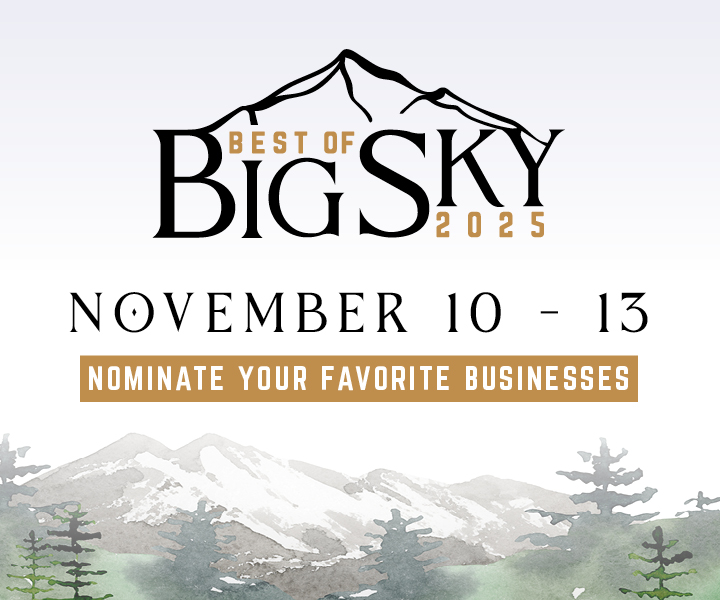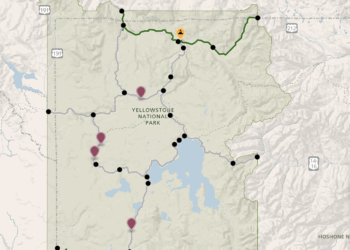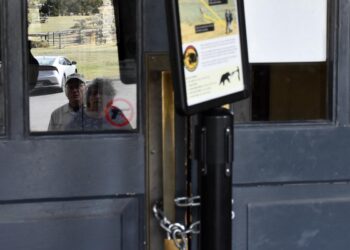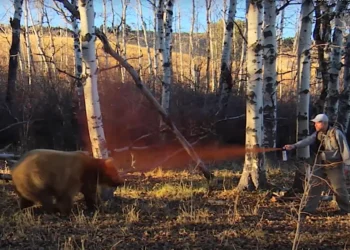By Greg Smith ExploreBigSky contributor
Once upon a time there lived a six-year-old female grizzly bear. She was beautiful, approaching 280 pounds, mostly chocolate brown with lighter shades dominating her forelegs and her muscular shoulder hump. She lived as all grizzlies do – solitary and alone, wandering, in her case, the wildest reaches of the Greater Yel- lowstone Ecosystem.
She was fortunate. The majority of her home range, almost 100 square miles, was within Yellowstone National Park. A smaller portion, her fall range, extended northward into the adjoining Absaroka-Beartooth Wilderness. With the exception of fall hunting season and chance encounters with vehicular traffic, she was safe from human encounters – and hence human-caused mortality.
In the spring she became pregnant. But a successful pregnancy requires a successful feeding season, and last fall the whitebark pine nut crop, a food source critical to Yellowstone’s grizzlies, had failed. In a compromised state, as indicated by her marginal stored-fat layer, she aborted the pregnancy.
So again she had attracted three different adult male grizzlies whose home ranges overlapped hers. Their big, sensitive noses scented her from more than a mile away. They postured and fought, and eventually a massive 15-year-old boar weighing nearly 600 pounds was chosen. The courtship lasted several weeks – from late May through the third week in June. She gave birth to three small cubs approximately nine months later.
The three cubs, born in the solitude and quiet of the winter den, were tiny at birth. Two males and one female, they were born in late-January, weighing approximately 16 ounces. One pound. Naked, hairless and totally dependent on their mother for the first few months of their lives. That dependency can, in the best circumstances, last upwards of three years.
Thus, in a quiet den, near tree line in the remote northern reaches of Yellowstone, it began for this family of bears. Upon emergence in early April, the cubs’ known world grew exponentially. And so, too, did the potential for trouble. Toward the end of May, one of the male cubs drowned while crossing a stream swollen with snowmelt.
In August, at the height of the tourist season, a car in the Lamar Valley hit and killed the female cub. The remaining male survived the gauntlet that first year and by late fall weighed 90 pounds. He and the sow entered a den at the end of the feeding season, in November.
Once more, with the pull of spring they emerged, this year in mid-March. Spring came early to the Northern Rockies. Upon emergence and driven by a relentless hunger, they migrated downslope to valley bottoms, just beginning to free from snow and likely to offer succulent plants which make up the bulk of a grizzly’s diet.
In April, the sow located an elk carcass abandoned by a pack of wolves. As a matter of survival, this early season abundance of calories had to be investigated.
But two days earlier, just after the elk was killed, a male grizzly had claimed the kill as his own, pushing off the 10 wolves. As the sow and cub neared, the female scented his presence. She could not; however, determine his exact location. Cautiously, they moved in to feed on the carcass. It would prove a fatal mistake for her surviving cub.
The big male grizzly, asleep in a nearby cover of thick vegetation, quickly responded to the trespass. Moving at 30 miles an hour, he covered 150 yards to the elk carcass in 10 seconds. The young male cub was caught from behind, and he died instantly with a powerful bite to the neck.
Had the female time to respond, perhaps she could have intervened and saved her cub. Regardless, she was again on her own, her three cubs gone.
Her fate would be determined, as always, by her ability to locate adequate calories and stay out of harm’s way. In most cases, this means avoiding humans. She might live to age 20 and reach 600 pounds. She would, as the spring seasons arrived over the years, attract males, mate and produce cubs. If all went well, a small number of those, perhaps two or three, would survive to become breeding-age adults themselves.
Grizzlies live within well-defined and relatively rigid biological parameters. In the long-term game of survival, these limitations are compounded by today’s modern world.
Greg Smith worked for nearly 20 summers in Glacier National Park as a ranger naturalist and a backcountry/bear management ranger. Those years re-affirmed his belief that education is one of the key roles a ranger can play in a place such as Glacier. He “talked bears” to thousands of backcountry users over the years. Not once did he have to “manage” a bear. Such is bear management, when done correctly.













